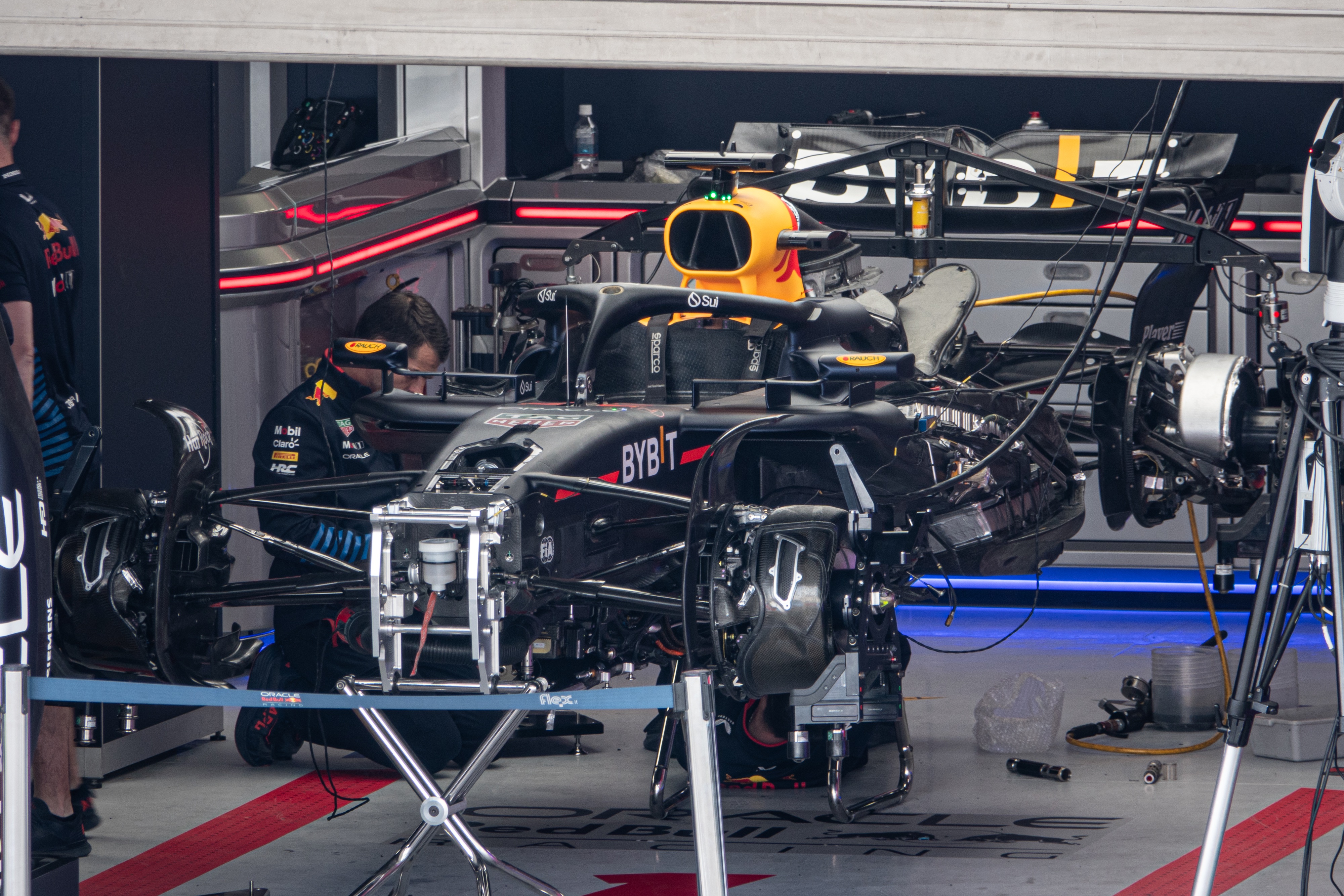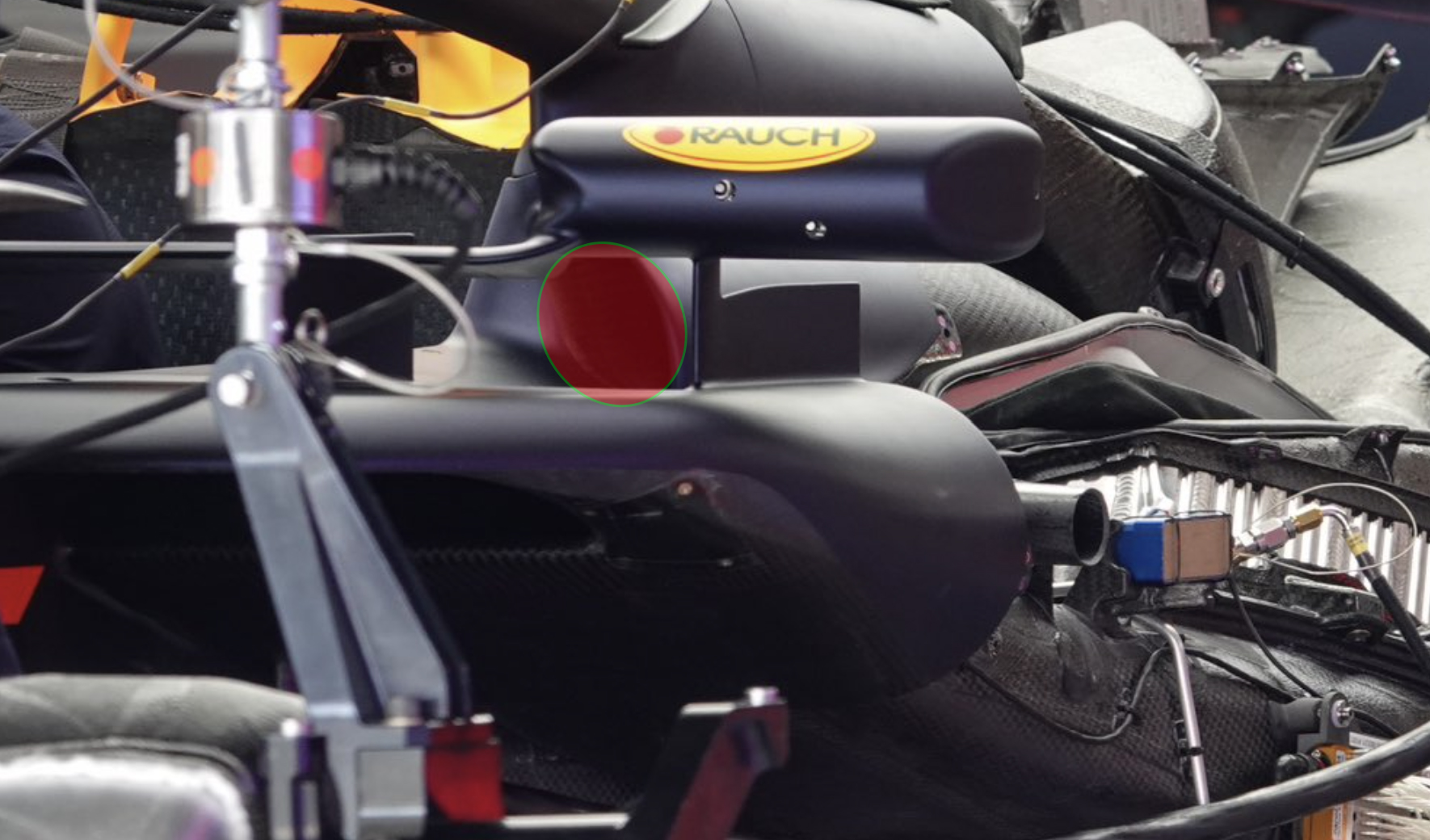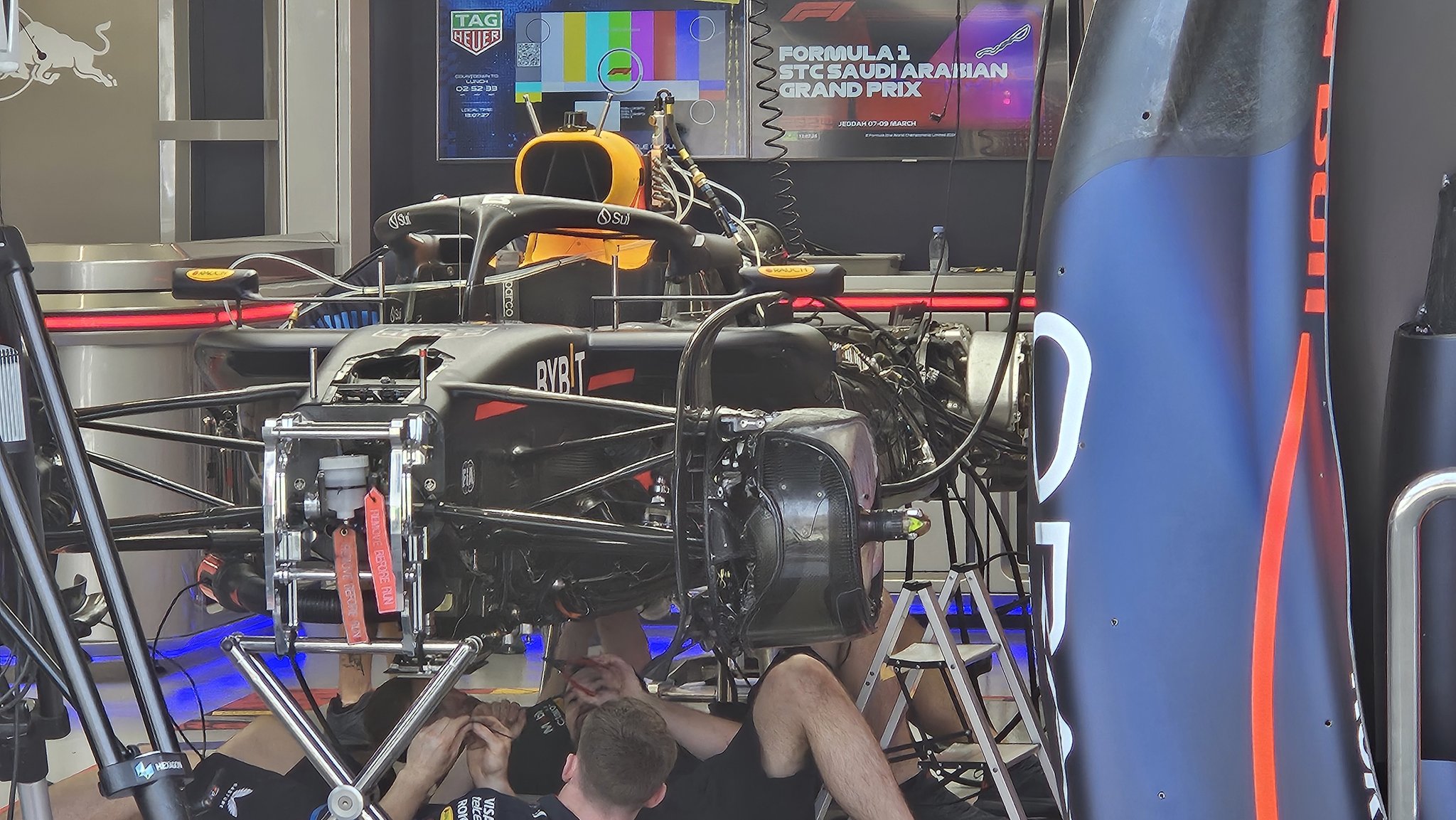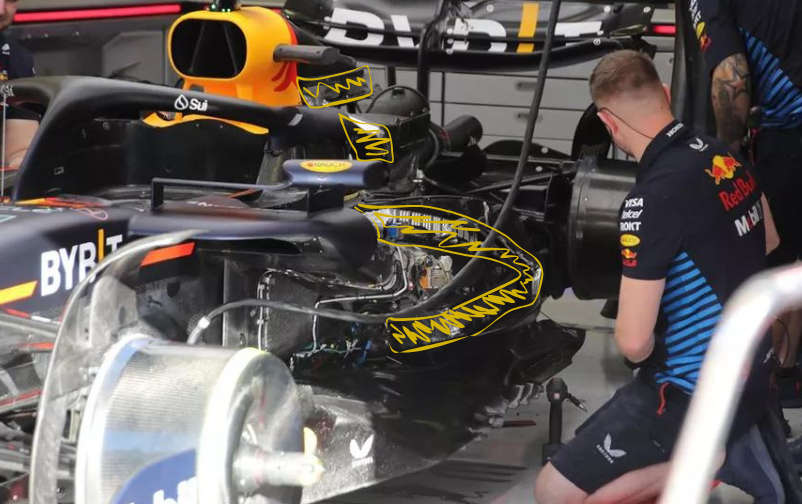

And here's older spec, use mechanics finger as reference and you'll see that the bybit red line is not 5mm thin.







It's possible that the changes are more hidden underneath (tunnels)
Silent Storm wrote: ↑04 Apr 2024, 17:41Yeah that's a good 20mm shorter than before rather than 5mm.

https://pbs.twimg.com/media/GKTtilIXMAA ... name=large
And here's older spec, use mechanics finger as reference and you'll see that the bybit red line is not 5mm thin.
https://pbs.twimg.com/media/GH-sCPdXMAE ... name=large
https://pbs.twimg.com/media/GHNaEnCXUAA ... me=900x900
You can't really compensate adding 2 extra leading edges with associated stagnation areas. There could be a stretched argument over drag trade-off even with the increase in frontal area and the pressurisation within the inlet, but leading edge stagnation drag is clear as day and undoubtedly leads to overall increase. I'm not saying it's a big increase, I'm not even saying it's significant, I'm just saying it's there.AR3-GP wrote: ↑04 Apr 2024, 17:06It is compensated by the reduction of the sidepod inlet cooling.
The drag associated with the cooling system is a function of the total required cooling power. Considering that they are still using a Honda engine, this hasn’t changed.
Enough of the games and telling us it’s pointless, draggy, and underwhelming. This is the world champion team. The track record speaks for itself.
Answered above mostly. I'm curious as to why you believe new inlet wouldn't have as much ram/stagnation drag?ringo wrote: ↑04 Apr 2024, 17:15It's still drag reduction. They added a new hole with a certain area and they balance off that by removing that area from the inlet.
It's not one to one, as the upper opening is in a different location with different effect on drag. It wont have as much of a ram effect and drag as the frontal opening. It also doesnt impact flow around the sidepod as the frontal opening would.
So yeah it's drag but as you may hint there is something esle at play. That other factor may be efficiency.

There are many reasons, It is not seeing the same air speed and flow quality there as the frontal opening due to its position on the upper surface, it's shape, and the fact it doesn't have an upper lip ramming air into it; to put it simply.
But that's not where 99% of the cockpit losses go. Scarbs posted a clip of CFD from Alpine recently and it's a perfect visual tool in this caseringo wrote: ↑05 Apr 2024, 05:56There are many reasons, It is not seeing the same air speed and flow quality there as the frontal opening due to its position on the upper surface, it's shape, and the fact it doesn't have an upper lip ramming air into it; to put it simply.
It's basically located in a very dirty flow area, adjacent to high stagnation about the cockpit and halo mounts. This area is already draggy, and placing that inlet there will in fact bleed off some of the wake coming out of the cockpit and

Thank you.Vanja #66 wrote: ↑05 Apr 2024, 09:40You can see circled in white the suspension losses coming towards sidepod inlet. This tells us purple shows minor and unavoidable losses in this CFD plot. On images 2 and 3 we see the boundary layer losses in purple around the bodywork in this whole area. And then on image 4 we see basically no losses where RB placed the new inlet (circled in yellow) and practically all of the cockpit losses go above the shoulders, circled in red.
This is the purpose of the flat shoulder geometry RB, Alpine and McLaren introduced in 2022 and why Mercedes went a step beyond with sausage shoulders last year. When you think about it, even without CFD it's clear cockpit losses will go out the back, there are side walls for driver's head protection preventing the air spilling out the side.